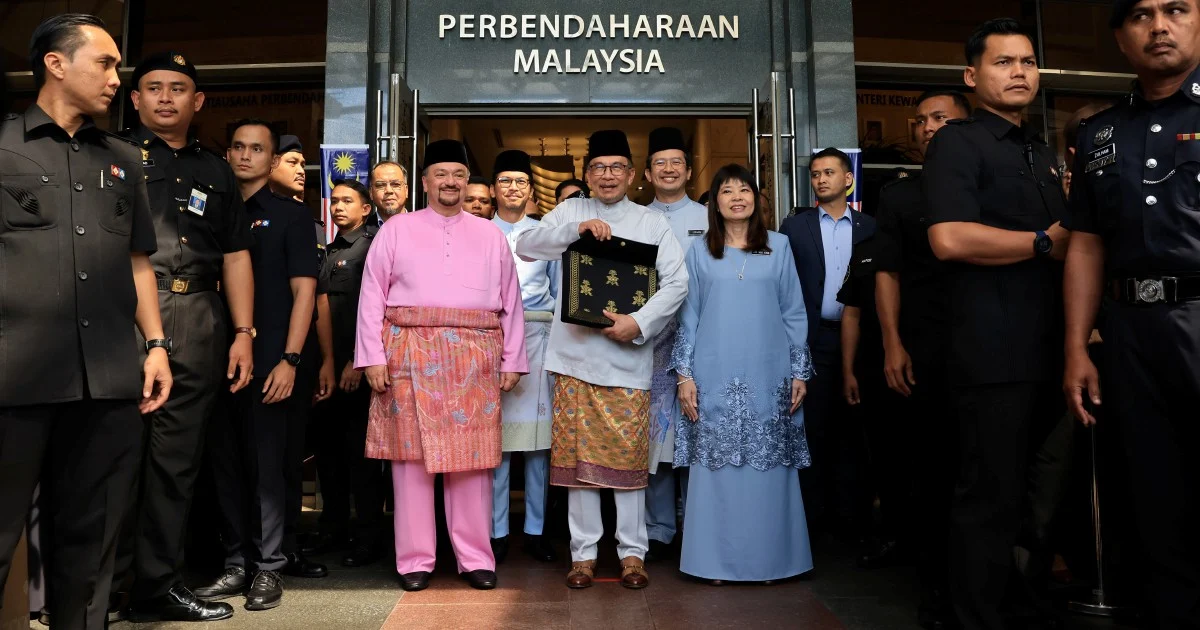Published by : The Future Research
After the announcement of Budget 2026 by the YAB Minister of Finance, we have gathered several insights, analyses, and recommendations to share. The Future Research has reviewed the key measures introduced in this year’s budget. The following sections present our observations and practical suggestions aimed at helping policymakers and stakeholders make the most of the opportunities outlined in Budget 2026.
1. Cost of Living Pressure and Inflation Burden
The 2026 Budget shall be designed to strengthen social protection and household resilience, continuing the government’s commitment to safeguard vulnerable groups most affected by rising living costs. According to the Pre Budget Statement issued by the Ministry of Finance, socioeconomic assistance will remain a key instrument in cushioning the impact of inflation on high risk households. However, persistent increases in essential goods prices, stagnant wage growth, and weakened purchasing power continue to strain low income families. The challenge is further compounded by weaknesses in subsidy targeting, which often prevent benefits from reaching those most in need, and by fiscal constraints that limit the measures to expand broad based subsidies without worsening the national deficit.
To address these challenges, Budget 2026 can emphasize structural improvements in social assistance delivery and progressive income acceleration. This includes the restructuring of targeted subsidy mechanisms to ensure accurate and transparent distribution, upgrading direct cash assistance programs based on real time data, and promoting towards high income effort through upskilling initiatives aligned with current labour market needs. There should be real implementation of stronger enforcement of integrity and accountability across all institutions and individuals, ensuring that governance reforms and legal actions are implemented comprehensively without bias or selective. Together, these measures aim to build a more inclusive, resilient, and self reliant socioeconomic foundation for Malaysia.
2. Equitable Regional Development and Infrastructures
Basic infrastructure development shall remain central to Malaysia’s equitable growth agenda. The 2026 Budget shall emphasizes support for rural and semi urban development to close the urban-rural gap. Nevertheless, implementation delays, cost overruns, and inadequate maintenance continue to undermine project effectiveness. Fairer allocation of Development Expenditure (DE) mechanism among all regions and states, transparent project monitoring, and partnerships with private sectors could strengthen long-term infrastructure outcomes and ensure equitable service delivery.
The persistent gap between urban and rural areas, as well as among less developed states, remains a major challenge to achieving equitable regional development in Malaysia. Despite repeated efforts to promote balanced growth, disparities in infrastructure quality, accessibility, and investment allocation continue to limit inclusive progress.
Furthermore, the distribution of infrastructure investment remains uneven, especially concerning major projects designed to connect border regions and stimulate cross border economic activity. While certain areas such as the Johor–Singapore Special Economic Zone (JS-SEZ) and Bukit Kayu Hitam receive multi billion ringgit allocations, while other regions are only earmarked for upgrades without transparent or detailed funding information. This imbalance risks widening inter regional disparities and weakening national economic integration.
To address these issues, a transparent and needs-based allocation formula should be adopted, taking into account actual regional indicators such as poverty rates, infrastructure deficits, as well as local and foreign investment potential. Each economic corridor must be integrated into the national budget framework with clear project details, cost estimates, and economic impact assessments. In addition, we propose that all economic corridors are to be mandated to submit periodic development and GDP impact reports directly to the Parliament, ensuring accountability and measurable progress.
Improved federalism between federal and state levels is also essential. Granting greater autonomy to state governments for smaller scale projects would allow for more responsive and localized development. This can be complemented by a comprehensive and streamlined audit mechanism for all periodic projects, ensuring tender transparency and continuous improvement.
3. Assistance to Farmers and Fishermen in Food & Agriculture Sector
Budget 2026 continues to provide socioeconomic support for the agricultural and fisheries sectors, targeting paddy farmers and fishermen. Farmers receive subsidies for fertilizer, seeds, and paddy cultivation, along with incentives for pest control and harvesting. Fishermen are supported through a monthly cost of living allowance of RM300, subsidized diesel at RM1.65 per litre, and vessel upgrading grants. These initiatives reflect the government’s ongoing commitment to sustaining food production and protecting rural livelihoods. However, inefficiencies in the distribution of agricultural input subsidies such as fertilizer and seeds remain a challenge. Issues including reliance on single suppliers, delivery delays, and limited market competition have hindered effective access and full utilization by farmers.
To strengthen productivity and efficiency, a shift towards production based support and systemic reform is essential. This includes gradually reducing input subsidies while increasing output based incentives to reward higher yields and efficiency. Application procedures for fertilizer and other aids should be simplified through local Farmers’ Associations (Pertubuhan Peladang Kawasan, PPK) or accredited vendors appointed via open tenders, ensuring transparency and accessibility for small scale farmers. Accelerating the completion of tertiary irrigation projects is also critical to guarantee consistent water supply to all granary areas, particularly through initiatives such as diverting Sungai Muda flows to the Naok Reservoir and upgrading the MADA irrigation network. Addressing outdated irrigation systems in selected granary zones will further improve water management, productivity, and sustainability in Malaysia’s rice stockpile.
4. Assistance and Incentives for Taxi and E-hailing Drivers
Budget 2026 maintains targeted support for the taxi drivers through full exemptions on excise duties and sales taxes for the purchase of new national cars produced by PROTON and PERODUA. To enhance operational safety and efficiency, the Human Resource Development Corporation (HRD Corp) has allocated RM10 million to cover training costs and allowances for licensed taxi drivers contributing to its fund. These initiatives aim to strengthen professional standards and modernize the public transport ecosystem. However, the policy’s limitation to new car purchases raises concerns over accessibility. How many taxi drivers, particularly those of advanced age or with modest incomes, may afford for new vehicles or qualify for bank financing? The sector also faces increasing competition from e-hailing platforms, which offer greater flexibility and lower entry barriers for drivers.
Moving forward, a more inclusive and diversified assistance framework is needed to address the realities faced by taxi drivers. This could include various forms of subsidies such fuel, vehicle maintenance and replacement, license and permit renewals, as well as improving access to auto financing. Upskilling initiatives should focus on digital literacy and the integration of taxi services into e-hailing platforms to increase competitiveness and income opportunities. In parallel, regulatory reforms are required to ensure a fair and balanced framework governing taxis, e-hailing services, and public transport providers promoting healthy competition while safeguarding drivers welfare and passengers safety.
5. Rising Government Debt Despite The Fiscal Responsibility Act being Introduced (FRA)
Malaysia’s fiscal position remains under scrutiny as the debt-to-GDP ratio hovers near at 64.6% in 2024 nearing 65% through 2025, with the government projecting a gradual decline over the next 3 to 5 years. However, questions persist over the credibility of this trajectory, particularly regarding the RM50.8 billion sourced from Government-Linked Investment Companies (GLICs), statutory bodies, and Ministry of Finance Incorporated entities. It remains unclear whether these funds constitute new debt obligations or forced investments to finance public projects. There are raising concerns that fiscal deficits may appear smaller than their actual levels through such accounting exclusions from the real total of RM470 billion budget announced. The reduction in the deficit, moreover, seems driven more by off-budget financing and fiscal transfers to private institutions than by genuine revenue growth. The current Sales and Service Tax (SST) framework also continues to face criticism for inefficiency, double taxation, and leakage, disproportionately burdening small businesses and consumers.
Moving forward, fiscal reform must prioritize structural correction, economic revitalization, and public well-being through transparent and productive policies. The national tax system should be reviewed comprehensively to ensure fairness, efficiency, and voluntary compliance beyond merely increasing rates or levies. YB Dato’ Seri Hamzah Zainudin, the Chief of Opposition from Perikatan Nasional coalition iterated in the Parliament on 13 October 2025 that national revenue must be harvested from real economic activity and productivity, not dependence on GLIC or GLC funding, as these entities should focus on long term investments rather than risky fiscal burdens. GLICs must be given operational autonomy free from political influence, with investment decisions based strictly on performance. Public expenditure should be expansionary yet strategic, growing the national economic pie to generate employment, social benefits, and measurable returns. Development Expenditure (DE) should emphasize projects with clear economic multipliers and tangible social outcomes such as MyKiosk, and avoiding inflated costs or monopolistic procurement. Concerns also persist over RM16.8 billion allocation for the Penang LRT project, which may come at the expense of infrastructure development in less developed regions such as the East Coast, underscoring the need for more equitable and impact based fiscal planning.
6. Economic Growth and Stimulating Foreign Direct Investment (FDI)
According to DOSM, Malaysia’s external position shows growing vulnerability, with net foreign direct investment (FDI) falling sharply to RM1.6 billion in the 2Q of 2025 with 83% decline compared to the previous year. Besides, BNM reported that our current account surplus has narrowed to 1% of GDP, reflecting weakening external competitiveness and slowing capital inflows. This trend highlights the urgent need to attract high-quality, value-added investments that contribute more than financial inflows alone. Genuine investment should foster technology transfer, create high-income employment for local talent, generate sustainable tax returns for the government, and strengthen our local value chains. The sustained decline in net foreign capital suggests the need for more coherent, confidence-building economic policies that can reestablish Malaysia’s position as a preferred investment destination.
To restore growth momentum, policy reform must focus on rebuilding investor confidence, inclusivity, and strategic collaboration. The government can deepen partnerships with foreign corporations operating locally, particularly in advanced sectors such as smart automation, renewable energy, and pharmaceuticals, to promote high-skilled job creation and innovation. At the same time, the social safety net must be restructured to ensure that every ringgit of assistance reaches its intended beneficiaries effectively. A broader economic revitalization effort is also essential. The one that expands Malaysia’s economic base, fosters equitable wealth creation, and strengthens political and social cohesion across all communities and parties. Only through inclusive growth and credible reform can Malaysia regain investor confidence and sustain long-term national prosperity.
Cyberjaya
13 October 2025

